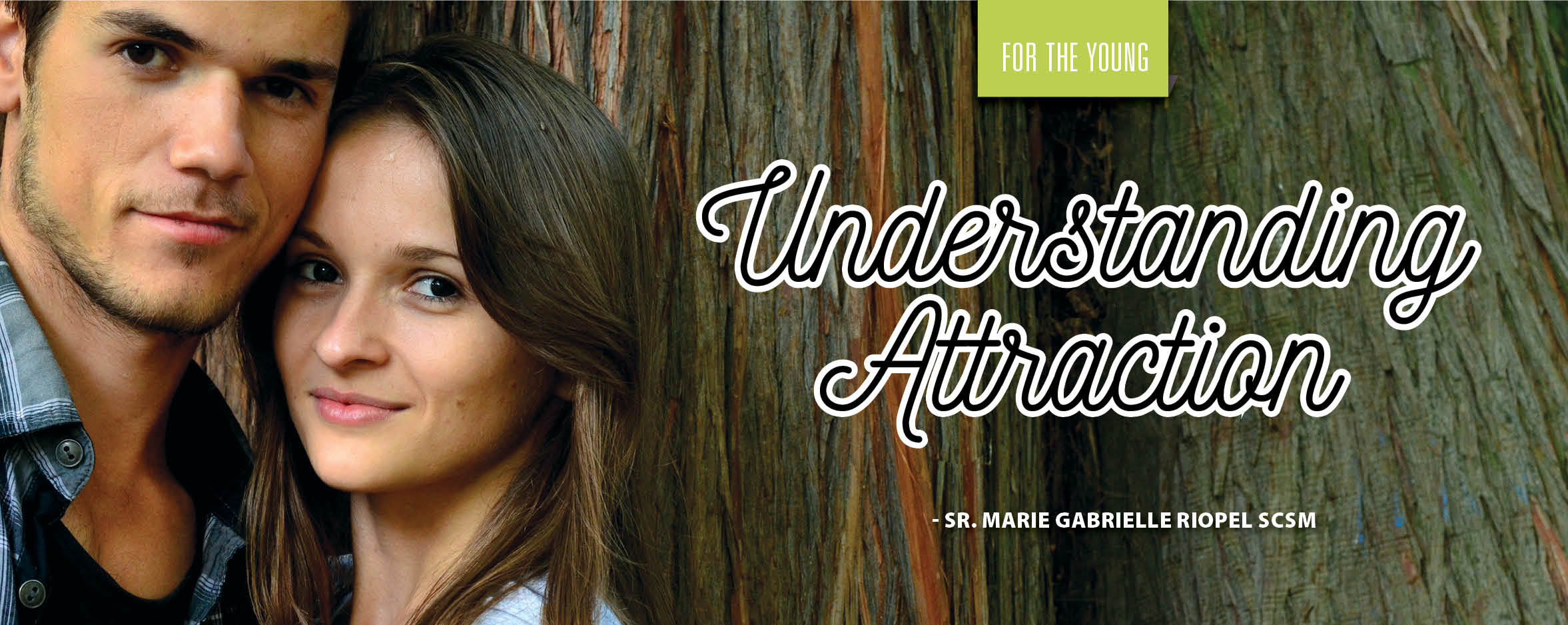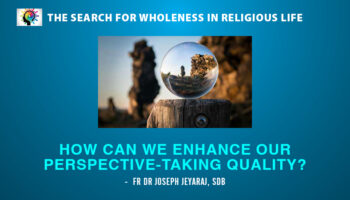“Sister, can I have a word with you?”
Rani seems anxious, even embarrassed.
“Sure what’s the matter?” I think she isn’t well or has had misunderstanding with someone.
“Sister, …. I love one boy…. He loves me too…. I can’t think of anything else. I can’t study, I can’t eat or sleep. I have even lost interest in my friends. Nothing appeals to me besides spending time with him… I want to be always with him. If he calls, I am happy for the rest of the day. When he doesn’t, I become anxious, afraid to lose his love. I also feel suffocated because I can’t speak about it with my parents. To meet him or to attend his calls I often have to invent stories…”
People would say that Rani is in love. However, what she experiences has more to do with attraction and its ‘side-effects.’
Is it bad? Is it wrong? Is she bad? Is she wrong? The only answer to this question is: Her response to the feeling of attraction corresponds to the way every human being has been programmed.
We need to understand why we experience this powerful pull towards another human being. We also need to see why attraction and desire alter us so powerfully and why the feeling can be so addictive.
Such attraction is not just a mental or emotional reality. It is influenced by three powerful chemicals which affect us very strongly. They are: dopamine, adrenaline and serotonin. We can see the three of them at work in Rani’s experience.
When we undergo the pull of attraction, there is a rise of dopamine and adrenaline in our blood. Dopamine makes us feel good in a way similar to the drug cocaine. And, like cocaine, dopamine is also known to produce higher level of energy, suppressed hunger, higher ability to focus and less need for sleep. Adrenaline on the other side is responsible for the increased heart beat and sweaty palm. It is the ‘fight or flight ‘hormone. It tells us to be alert because something serious is taking place that can affect our lives.
‘Falling in love’ also brings the serotonin level of our body down. Serotonin is a chemical in our body that is involved in sleep, depression, and memory. Some of the consequences of the lower level of serotonin are anxiety and nervousness.
Why do we experience attraction? And why with a particular person and not with another one?
Psychology, biology and other sciences have come to the following conclusions:
- Attraction takes place because of our ‘programming.’ Its ‘purpose’ is to ensure that we seek and identify the one most genetically suited for transmitting our combined genes to an offspring. It is a biological imperative for the survival of any species.
- It involves all our senses in an imperceptible way that has less to do with how “sweet” the person is and more with how our senses perceive him or her.
- It starts with puberty and ends… well, some say one hour after we die!
- Attraction isn’t something we decide to experience. It has no switch-on or off button. It has a time limit but can however be reignited.
- Though desire isn’t love, it can lead to love or to commitment.
Let’s have a look at the first two points.
Attraction takes place because of our programming to ensure the continuity of the species.
Ever wondered why someone who is appealing to you isn’t attractive to another person?
Science tells us that we are ‘wired’ to identify the person who is most suitable to us genetically. In genetics, suitability is based on diversity. In other words, the more a person has a genetic set up dissimilar to ours, the more he or she becomes alluring to our senses. How is it so? When two persons of very different DNA have children there is more chance for their children to be stronger and healthier. On the other side, the more similar the parents’ DNA are, the weaker and the more prone to sickness and malformation their children are likely to be.
It involves all our senses
Our brains are programmed to pick up the necessary sensorial clues from the others. Our body structure, the symmetry of our face, our personal smell and the sound of our voice convey something of our genetic and ‘reproductive qualities’.
Experiments in this regard have found that:
Sight
Men are most sensible to physically attractive women. We know that already, but that is not all:
Men and women find symmetrical faces more appealing.
Both men’s and women’s eyes pick up and are attracted by the other gender’s physical characteristics: broad shoulder and narrow waist for the male and curvaceous forms for the female.
Smell
Unbeknown to women, their nose perceives genetic messages that make them like or dislike another man’s body odour. During experiments women preferred the smell of t-shirts worn by men most genetically dissimilar to them. Likewise the smell they disliked the most was from t-shirts worn by their own brothers.
Men, on the other hand, unconsciously perceive and are more attracted by the smell of women in their period of ovulation, regardless of their physical appearance.
Sound
Similar to the shape of the body, the voices with stronger feminine or masculine character are most attractive to the other gender. Men prefer women with higher pitch voices and women prefer men with lower pitched voices.
All this sounds cold, doesn’t t it? Quite alien from the burning sensation or glowing warmth that attraction produces… If we thought that we had a say in what makes a person attractive to us, these scientific facts bring quite a disillusion. Our brain plays funny tricks on us! It influences our likes and dislikes in a profound, unconscious and powerful way.
If we think about it, could it not be that the science of attraction reveals something special about God? It helps us see a creative passionate God who made us drawn to others in thousand intricate ways.
That’s why I’d like to conclude with the words of the psalm 139, 14-15:
‘For you formed my inward parts; you knitted me together in my mother’s womb. I praise you, for I am fearfully and wonderfully made. Wonderful are your works; my soul knows it very well.’
There is more to human attraction than chemicals and unconscious factors, of course. More about this in the next article.

To subscribe to the magazine Contact Us





